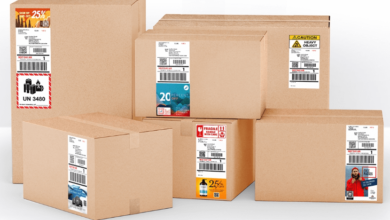The Ultimate Guide to Iron-On vs Sew-On Hat Patches

When it comes to personalizing your hats, patches are an exciting way to express your unique style. Two popular methods of attaching patches to hats are iron-on and sew-on techniques. Each method has its own benefits, drawbacks, and best-use scenarios, so it’s important to understand the differences to determine which option is best for your needs. This guide will explore iron-on and sew-on hat patches in detail, comparing them in terms of durability, ease of use, and customization options.
What Are Iron-On Hat Patches?
How Iron-On Patches Work
To apply an iron-on patch, you simply place the patch on the desired spot on your hat, cover it with a clean cloth or parchment paper, and press a hot iron on top for about 30 seconds. The heat activates the adhesive, which bonds the patch to the fabric. Once the patch cools, it should be securely attached to the hat. The process is quick, with minimal tools required—just an iron and a cloth to protect the fabric.
Pros and Cons of Iron-On Hat Patches
The main advantage of iron-on patches is their convenience. They are easy to apply, require minimal tools, and don’t require any sewing skills. This makes them perfect for DIY projects or for those new to customizations. However, they do have their drawbacks. Iron-on patches may not work well on all fabrics. Materials like nylon or polyester, which are heat-sensitive, may not be suitable for iron-on applications. Additionally, over time, the adhesive can weaken, especially after multiple washes, which could cause the patch to peel off.
Best Materials for Iron-On Hat Patches
The best fabrics for iron-on patches are cotton, denim, and other materials that can withstand high heat without being damaged. Similarly, the patch itself is typically made of woven or embroidered fabric, which holds the adhesive well and provides a durable and aesthetically appealing finish. If you’re working with a fabric that’s sensitive to heat, it’s best to test the patch on a small area first.
What Are Sew-On Hat Patches?
How Sew-On Patches Work
To apply a sew-on patch, you need to position the patch on your hat and secure it in place with pins. Then, using a needle and thread or a sewing machine, you sew around the edges of the patch to attach it to the fabric. The process is more time-consuming than using iron-on patches but offers a stronger and more secure hold. If you’re working with a sewing machine, the process is faster, but hand-stitching will take more effort and time.
Pros and Cons of Sew-On Hat Patches
Sew-on patches offer superior durability compared to iron-on patches. The stitched bond is not affected by heat or moisture, so it won’t degrade over time. This makes sew-on patches ideal for hats that will see heavy use or frequent washing. However, they require more skill and effort. You need to know how to sew or have access to a sewing machine, and the process can be tedious, especially for larger patches. If you’re not experienced with stitching, it may take you a while to complete the application.
Best Materials for Sew-On Hat Patches
Fabrics like cotton, canvas, and wool are ideal for sew-on patches due to their sturdiness, making them easy to stitch through. Similarly, sew-on patches are often made from heavy-duty materials like embroidered fabric, felt, or leather, ensuring longevity and a premium look. For intricate designs or detailed work, embroidery or felt is often the material of choice.
Comparing Durability: Iron-On vs Sew-On Hat Patches
Longevity of Iron-On Patches
Iron-on patches are generally quite durable for casual use, but their longevity can be limited. The adhesive backing may degrade over time, especially when exposed to heat, moisture, and frequent washing. This can cause the patch to loosen or peel off, requiring reapplication. Iron-on patches are often best suited for light wear or fashion items that are not washed frequently.
Longevity of Sew-On Patches
Sew-on patches, on the other hand, are known for their superior durability. The bond created by stitching is strong and not affected by heat, moisture, or frequent washing. This makes sew-on patches ideal for items that will see a lot of use or need to endure more rigorous conditions. Whether you’re using it on a hat that gets worn every day or a custom piece that needs to last, sew-on patches will hold up much better in the long term.
Which is Better for Heavy Use?
For heavy use, sew-on patches are the superior choice. The stitched attachment is much stronger and more resistant to wear and tear compared to the adhesive used for iron-on patches. While iron-on patches are fine for casual or decorative items, they may not be suitable for hats that are worn frequently or subjected to rough conditions.

Which Method Is Easier to Use?
Step-by-Step Guide to Applying Iron-On Hat Patches
Applying an iron-on patch is a simple and quick process. To start, position the patch where you’d like it on your hat and secure it with a light hold. Place a cloth over the patch to protect it from direct heat, then set your iron to a high heat setting without steam. Press the iron firmly on top of the patch for about 30 seconds. Once done, let the patch cool for a few minutes before moving the hat. The adhesive should have been set firmly, securing the patch in place.
Step-by-Step Guide to Sewing On Hat Patches
Sewing on a patch requires more effort but can be equally rewarding. First, position the patch on the hat and pin it in place. Next, thread your needle with a color-matching thread and begin stitching around the edge of the patch. You can use a simple running stitch or a more decorative blanket stitch. Continue stitching until the patch is completely secure, then tie off the thread on the inside of the hat. Depending on the size and thickness of the patch, this process can take anywhere from 15 to 30 minutes.
Time and Tools Required for Each Method
When it comes to time and effort, iron-on patches are the quicker and easier option. All you need is an iron and a cloth, and the process typically takes less than 10 minutes. The skill level required is minimal, making it ideal for beginners. On the other hand, sew-on patches require more time and effort, particularly if you’re doing the stitching by hand. You’ll need a needle, thread, and perhaps some pins, and the process can take anywhere from 15 to 30 minutes, depending on your experience and the complexity of the patch.
Conclusion
Choosing between iron-on and sew-on hat patches ultimately depends on your priorities. If you’re looking for a quick, easy, and budget-friendly way to add a patch to your hat, iron-on patches are a great option. They require minimal tools and are perfect for casual wear or fashion accessories. However, if you need a more durable solution that can withstand heavy use and frequent washing, sew-on patches are the way to go. Though they require more time and skill to apply, sew-on patches offer longevity and sturdiness that iron-on patches cannot match. If you’re purchasing in bulk, wholesale patches for hats can provide both affordability and variety. Assess your needs and choose the method that best suits your hat customization project.



